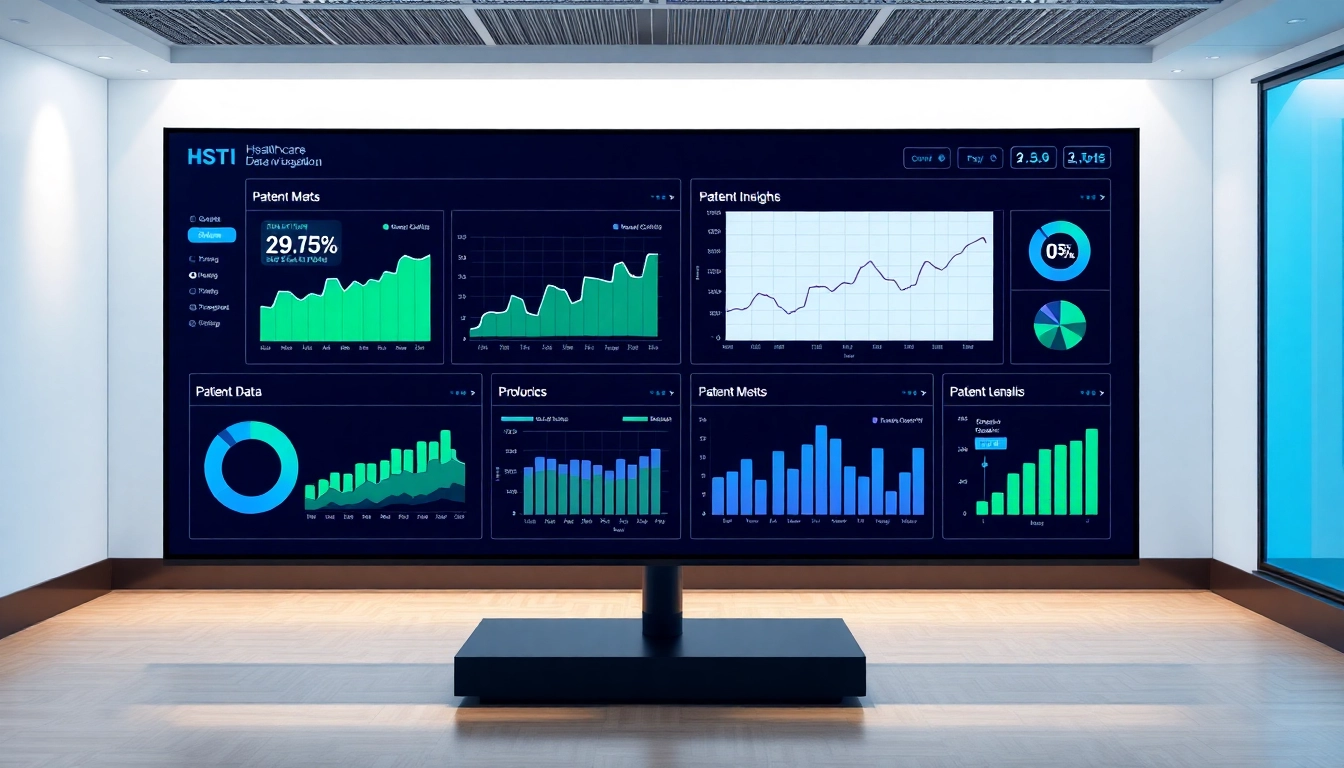Introduction to Health Informatics
In today’s fast-paced healthcare environment, the integration of information technology with healthcare practices is becoming increasingly vital. Health informatics, the interdisciplinary study of how to leverage data and technology to enhance healthcare delivery, is at the heart of this transformation. Understanding how to harness these innovations can lead to improved patient outcomes, optimized workflows, and better resource management. For a comprehensive overview of informatics and its implications in healthcare, visit https://www.informaticsview.com.
Defining Health Informatics
Health informatics combines various disciplines, including computer science, information science, and healthcare. Its primary focus is the analysis, design, implementation, and evaluation of health information systems. It encompasses the entire continuum of care, from the individual patient to the broad population health level. The core objective of health informatics is to harness the power of data to improve healthcare delivery, support clinical decisions, and facilitate patient engagement. Ultimately, it seeks to bridge the gap between technology and human knowledge, making healthcare more efficient and impactful.
Importance in Modern Healthcare
The relevance of health informatics in contemporary healthcare cannot be overstated. As the volume of health data grows exponentially with advanced technologies, healthcare providers need robust systems to manage this information effectively. Health informatics facilitates:
- Enhancing patient safety: Electronic Health Records (EHRs) and Clinical Decision Support Systems (CDSS) minimize errors through precise data retrieval and documentation.
- Improving healthcare accessibility: Innovative technologies such as telemedicine allow healthcare to reach underserved populations, providing necessary care remotely.
- Facilitating population health management: By analyzing health data trends, organizations can implement preventative measures, targeting at-risk groups more effectively.
- Streamlining operational workflows: Efficient informatics solutions reduce redundancies and optimize resource use, ultimately leading to cost reductions.
Key Technologies in Health Informatics
Several technologies play essential roles in advancing health informatics:
- Electronic Health Records (EHR): Central to most healthcare informatics systems, EHRs provide real-time access to patient information across various care settings.
- Telehealth tools: These include video conferencing software and mobile health applications that ensure continuous patient monitoring and remote consultations.
- Data analytics tools: Advanced analytics platforms allow for predictive modeling and strategic decision-making based on aggregated health data.
- Wearable technology: Devices that track health metrics play a crucial role in patient self-management and chronic disease monitoring.
Components of Health Informatics Systems
Electronic Health Records (EHR)
EHRs are perhaps the most visible manifestation of health informatics. They store patient data that can be easily accessed and shared among authorized healthcare providers. Key features of EHRs include:
- Interoperability: EHRs can communicate with other systems, enabling seamless data exchange across various healthcare settings.
- Patient engagement: Many EHR systems offer patient portals, allowing individuals to access their health information, schedule appointments, and communicate with providers.
- Clinical decision support: EHRs can embed alerts and reminders based on patient data, enhancing clinical decision-making.
Clinical Decision Support Systems (CDSS)
CDSS are computer-based systems that assist healthcare providers in making clinical decisions. They analyze data and suggest appropriate interventions based on clinical guidelines. Benefits of CDSS include:
- Evidence-based recommendations: CDSS rely on the latest research to provide updated clinical guidelines, ensuring high-quality care.
- Error reduction: By incorporating patient-specific data, CDSS can identify potential adverse interactions or misdiagnoses.
- Improved efficiency: Streamlined access to information allows providers to make faster, informed decisions during patient visits.
Telemedicine and Remote Monitoring
Telemedicine has redefined how healthcare is delivered, breaking geographical barriers and ensuring access to care. Key aspects include:
- Remote consultations: Patients can engage healthcare professionals via video calls, enabling timely interventions without the need for office visits.
- Home monitoring devices: Tools like blood pressure cuffs and glucose monitors can transmit data directly to providers, allowing for proactive management of chronic diseases.
- Lower costs: By reducing the need for hospital visits, telemedicine can lower healthcare costs for both providers and patients.
Challenges in Implementing Health Informatics
Data Security and Privacy Concerns
As healthcare increasingly relies on digital systems, the risk of data breaches becomes a significant concern. Protecting patient information necessitates rigorous security measures, including encryption, authentication protocols, and regular security audits. Upcoming regulations, such as GDPR and HIPAA, further stress the importance of maintaining patient confidentiality and safe data handling practices.
Integration with Existing Systems
The integration of new health informatics systems with existing infrastructure often presents challenges. Legacy systems may be incompatible with modern technologies, requiring substantial investment in upgrades or replacements. Organizations must proactively assess their current systems and establish interoperability standards to facilitate smooth integration and data sharing across platforms.
User Adoption and Training
A significant barrier to successful health informatics implementation is user resistance. Healthcare providers may be reluctant to adapt to new systems due to the learning curve involved. Comprehensive training programs must accompany new system rollouts, and ongoing support should be available to address user concerns and promote familiarity.
Best Practices for Health Informatics
Effective Data Management Strategies
Effective data management is key to maximizing the benefits of health informatics. Strategies include the implementation of standardized data entry processes, ensuring data quality, and regularly updating systems to incorporate feedback. It’s essential to ensure that data is structured and categorized for accurate analytics and retrieval.
Enhancing User Experience
The design of informatics systems should prioritize user experience to facilitate adoption. User-friendly interfaces, intuitive navigation, and customizable dashboards can significantly enhance satisfaction among healthcare providers. Soliciting feedback from users during the design phase ensures that systems meet their needs and workflows effectively.
Continuous Improvement and Evaluation
Health informatics is a dynamic field, necessitating ongoing evaluation of systems and processes. Organizations should set performance metrics and conduct regular assessments to identify areas for improvement. Continuous learning and adaptation of technologies, based on emerging health trends and research, are crucial for maintaining relevance and effectiveness.
The Future of Health Informatics
Emerging Trends and Technologies
As the field of health informatics evolves, several trends are becoming increasingly prominent:
- Artificial Intelligence (AI): AI is being integrated into various health informatics systems to enhance data analytics, improve predictive modeling, and support clinical decision-making.
- Personalized medicine: Advances in genomics and biotechnology are driving a shift toward personalized health solutions tailored to individual patient profiles.
- Data interoperability: Ensuring that different health systems can communicate effectively is vital as diverse technologies become commonplace in healthcare.
The Role of Artificial Intelligence
AI has the potential to revolutionize health informatics by improving decision support, automating routine tasks, and analyzing vast datasets for clinical insights. Some applications of AI in this field include:
- Predictive analytics: AI can analyze trends and patterns in health data, helping healthcare systems anticipate patient needs and allocate resources efficiently.
- Natural language processing: AI can help in extracting valuable information from unstructured data, facilitating improved patient outcomes.
- Virtual health assistants: These AI-driven tools can enhance patient engagement by providing tailored health advice and reminders for appointments or medications.
Impact on Patient Care and Outcomes
The future landscape of health informatics is poised to significantly impact patient care. With technologies that empower patients in their healthcare journey and support providers in delivering efficient, timely care, the ultimate goal is to enhance health outcomes across populations. Continuous innovation in health informatics not only promises efficiencies but holds the potential to change how we think about and deliver healthcare for generations to come.



